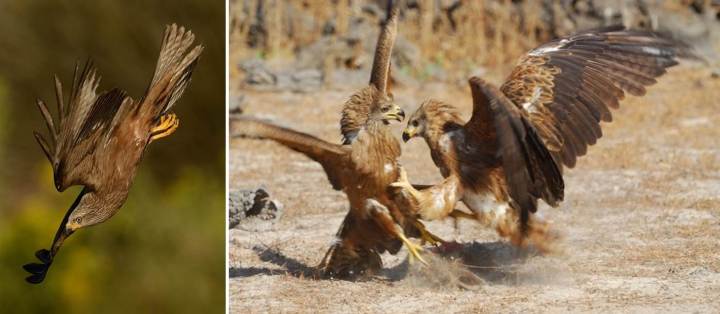In this post Fabrizio Sergio discusses his recent paper ‘No effect of satellite tagging on survival, recruitment, longevity, productivity and social dominance of a raptor, and the provisioning and condition of its offspring’
Ecologists are using ever smaller and more sophisticated electronic devices to track the movements of animal species, even small songbirds and butterflies, all around the globe. These studies are producing leapfrog advances in our knowledge of threatened species and our capability to preserve them. However, less than 10% of the studies also test whether the devices themselves can harm their research subjects or impair their behavior and performance thus yielding data of dubious scientific and ethical value. The problem is exacerbated by the fact that high technological costs typically imply small samples of individuals tracked in each study, which prevents the possibility of investigating impacts from the onset of the investigation.

In this study, we took advantage of a large-scale and long-term satellite-marking and demographic study to compare tagged individuals of a medium-sized raptor, the black kite, with control individuals of comparable sex, age and breeding status. We show that satellite-tagging did not affect the body condition, breeding success, recruitment, age of first breeding, survival and longevity of the marked birds, nor their foraging ability, social status and capability to raise viable offspring. Despite such promising results and given the widespread demonstrations of impact reported by previous studies, we consider that the opportunism and the wide body mass fluctuations typical of this migratory raptor, considered one of the most successful birds of prey in the world, may have predisposed it to withstand tagging loads more than other species.

Overall, we caution that the current race to deploy ever smaller and more durable devices on ever more species through increasingly longer-lasting attachment methods is not accompanied by similar progress in our understanding of marking impacts. Thus, we urge the scientific community to incorporate more evaluations of tagging into future bio-logging studies. Future initiatives to further minimize tagging impacts could include more stringent licensing criteria enforcing attendance at training courses or incorporation of impact evaluations into study designs, increased availability of training courses for tagging, and enhanced sharing of information through blogs, workshops or specialized journal sections.